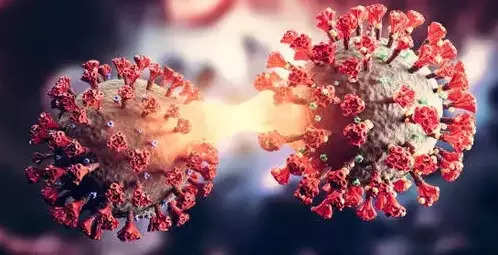Covid didn’t take a summer vacation - Times of India
 [ad_1]
[ad_1]

Fortunately, since a vast majority of Americans have some sort of immunity, either from vaccination or a prior infection, or both, most people who get infected now will have a mild illness.
And while there are multiple strains circulating (nearly all of them descendants of the omicron XBB variant), they are unlikely to cause the “wildfire spreading” that occurred with the delta variant and the first omicron variant, said Dr. David Boulware, a professor of medicine specializing in infectious diseases at the University of Minnesota Medical School. That includes EG.5, which was recently named a “variant under monitoring” by the World Health Organization and now accounts for about 17% of U.S. cases.
Below is a quick refresher on how to navigate an outbreak in your community or home.
Tracking
Monitoring where and how much the virus is spreading has become significantly more difficult since the Centers for Disease Control and Prevention stopped tracking cases in May, with the end of the federal public health emergency. However, there are still a few metrics to pay attention to — in addition to anecdotal evidence that people around you are getting sick.
The two best metrics to monitor local infection levels are hospitalization rates and wastewater data, which can both be found on the CDC Covid Data Tracker website. For hospitalization rates, go to the map and select your county. For wastewater data, scroll down to the surveillance map and locate your nearest monitoring site.
Because fewer people tend to have severe cases these days, hospitalization data is less representative of how many people are infected. But it can still be useful for measuring trends: Nationwide, about 9,000 people were hospitalized for Covid in the past week, a roughly 12% increase over the prior week.
Many experts say that wastewater testing is a more accurate metric for identifying how much virus is circulating in a community. More than 1,300 sewage treatment plants across all 50 states currently monitor levels of the virus, which infected people shed in their stools.
“Wastewater is the only data source we have that gives us early warnings of new outbreaks,” said Aparna Keshaviah, the director of wastewater research at Mathematica, a research consultancy firm. “Hospitalizations and deaths are like these contrails of Covid infections; they show you the aftermath of what’s already happened.”
Testing
Covid symptoms haven’t changed much since the start of the pandemic — sore throat, congestion, fatigue, fever and cough remain the most common, said Dr. Paul Sax, the clinical director of the division of infectious diseases at Brigham and Women’s Hospital. Some people may also experience gastrointestinal symptoms, and there are reports that the XBB.1.16 strain can cause pink eye.
These generic symptoms mean it can be “extremely difficult to tell one virus from another,” Sax said. The easiest way to know if you have Covid or just a summer cold is to take a rapid test.
If the rapid tests in your bathroom are past their expiration dates, check the manufacturer’s website to see if the dates have been extended before you toss the tests. When at-home rapid tests were initially authorized, the Food and Drug Administration required strict expiration dates, but many have since been relaxed.
Rapid tests are still effective for all of the variants that are circulating, and if you test positive, you can trust that you’re infected. If you have symptoms but get a negative result, wait two days and test again; so-called serial testing, where you test multiple times over the course of several days, is more than 90% effective at detecting a symptomatic infection.
“If the virus is not present in large quantities,” you may get a negative result even when you’re symptomatic, said Dr. Apurv Soni, an assistant professor at UMass Chan Medical School who has researched rapid test accuracy. “By doing serial testing, you give yourself a chance to catch the virus when it has increased to a higher quantity in your body.”
Treating
If you test positive for Covid and you’re over age 60 or have a condition that increases your risk for a severe infection, ask your doctor to prescribe Paxlovid as soon as possible. For people in these groups, the drug reduces the risk of hospitalization if they start taking it within the first five days of an infection. For young, healthy people, the benefits are less clear: Paxlovid doesn’t provide additional protection against severe disease, but it may help prevent the development of long Covid.
Experts say that the CDC guidance to isolate for five days after a positive test result — meaning stay at home and stay away from other people as best you can — continues to be generally good advice. If you are going to be around others, wear a high-quality N95, KN95 or KF94 mask. Although Covid is now behaving like a typical respiratory illness in most people, it can still be dangerous for vulnerable populations, and long Covid remains a risk, so it’s important to avoid infecting others.
If you have symptoms and test positive after five days, “then I would still avoid contact with others,” Sax said. But if you test positive after your symptoms have cleared, research now suggests that it’s unlikely you’re still infectious. At that point, Sax said, “stop testing and just go about your life.”
Comments
Post a Comment